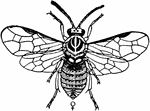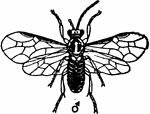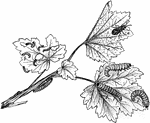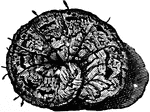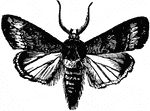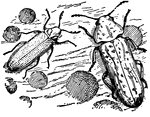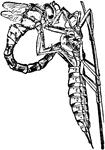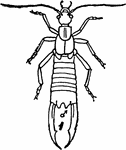This gallery includes 949 illustrations of other orders of insects.

Dacus Oleae
"A little fly about half the size of a house-fly. This insect lives chiefly upon the fruit of the olive-tree."
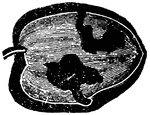
Gallery Formed by Larvae of Dacus Oleae
"It requires twenty-seven to twenty-eight days for this insect to pass to its perfect state."

Larvae of Dacus Oleae
"They pass fifteen or sixteen days in boring a gallery in the pulp of the olive, at first vertically,…
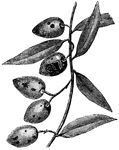
Olives attacked by Dacus Oleae
"A little fly about half the size of a house-fly. This insect lives chiefly upon the fruit of the olive-tree."
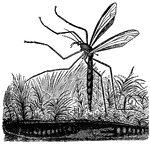
Daddy Long Legs (Tipula Oleracea)
"Sometimes these insects destroy grass; they often injure the harvest."

Daphnia
"The water fleas just visible to the naked eye are present in nearly all waters and become very abundant…
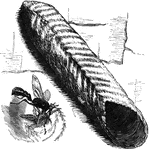
Dauber
"A South American genus, Pelopaeus, allied to the preceeding, is called the Dauber, from its…
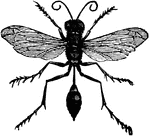
Mud Dauber
Mud Daubers plaster their nests against out-houses, in all sorts of corners and under all sorts of shelters

Devil's Coach Horse
This insect can be beneficial to gardens. This insect eats other insects and snails.
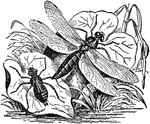
Dragon Fly and Nymph
An illustration of a dragon fly (right) and a nymph (left). A dragonfly is a type of insect belonging…

Dragon-fly
An insect with four large transparent wings, that are net-veined. They are abundant in ponds and still…
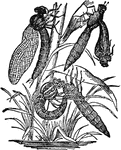
Dragonfly
"The Dragon Fly has a large, broad head, very freely attached to the thorax, and large, convex, prominent…

Dragonfly
They have a long slender body, large head with enormous eyes, very strong jaws, and two pairs of large…

Dragonfly
"The anterior portion of the body of Aeschua cyanea freed from the puparium." — Encyclopedia Britannica,…
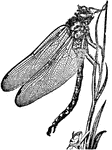
Dragonfly
"The perfect insect (the wings having acquired their full dimensions) resting to dry itself, preparatory…

Dragonfly
A dragon-fly and its development. Larva and pupa feeding at 1 and 3; 2, nymph ready to change; 4, a…
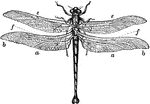
Dragonfly
An insect characterized by large multifaceted eyes, two pairs of strong transparent wings, and an elongated…

American Dragonfly
"They are often seen moving with a rapid flight over rivers, ponds, and meadows, alighting for a moment,…

Eleanor Dragonfly
"Among the larger kinds of dragon-fly is the Libellula depressa of Linnaeus, common in Europe,…
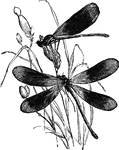
Virgin Dragonfly
"One of the most beautiful species of Euopean dragonflies is the Virgin Dragon-fly, Libellela virgo,…

Earwig
Earwigs is the common name given to the insect order Dermaptera characterized by membranous wings folded…

Earwig
Spongophora brunneipennis is a species of earwig, and insect distinguished by forceps on its abdomen.
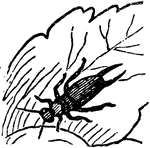
Earwig Larva
An illustration of an earwig larva. Earwigs is the common name given to the insect order Dermaptera…
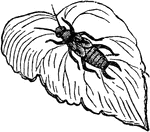
Earwig Pupa
An illustration of an earwig pupa. Earwigs is the common name given to the insect order Dermaptera characterized…

Earwigs
"The Foficulina includes the Earwig, Forficula, which appears to live principally upon vegetable…

Echinomyia Grossa
"They derive nourishment from flowers, deposit their eggs on caterpillars, and the young larvae on hatching…

Female Gipsy Moth
The female gipsy moth is larger than the male. The wings are a dingy or yellowish white with darker…


